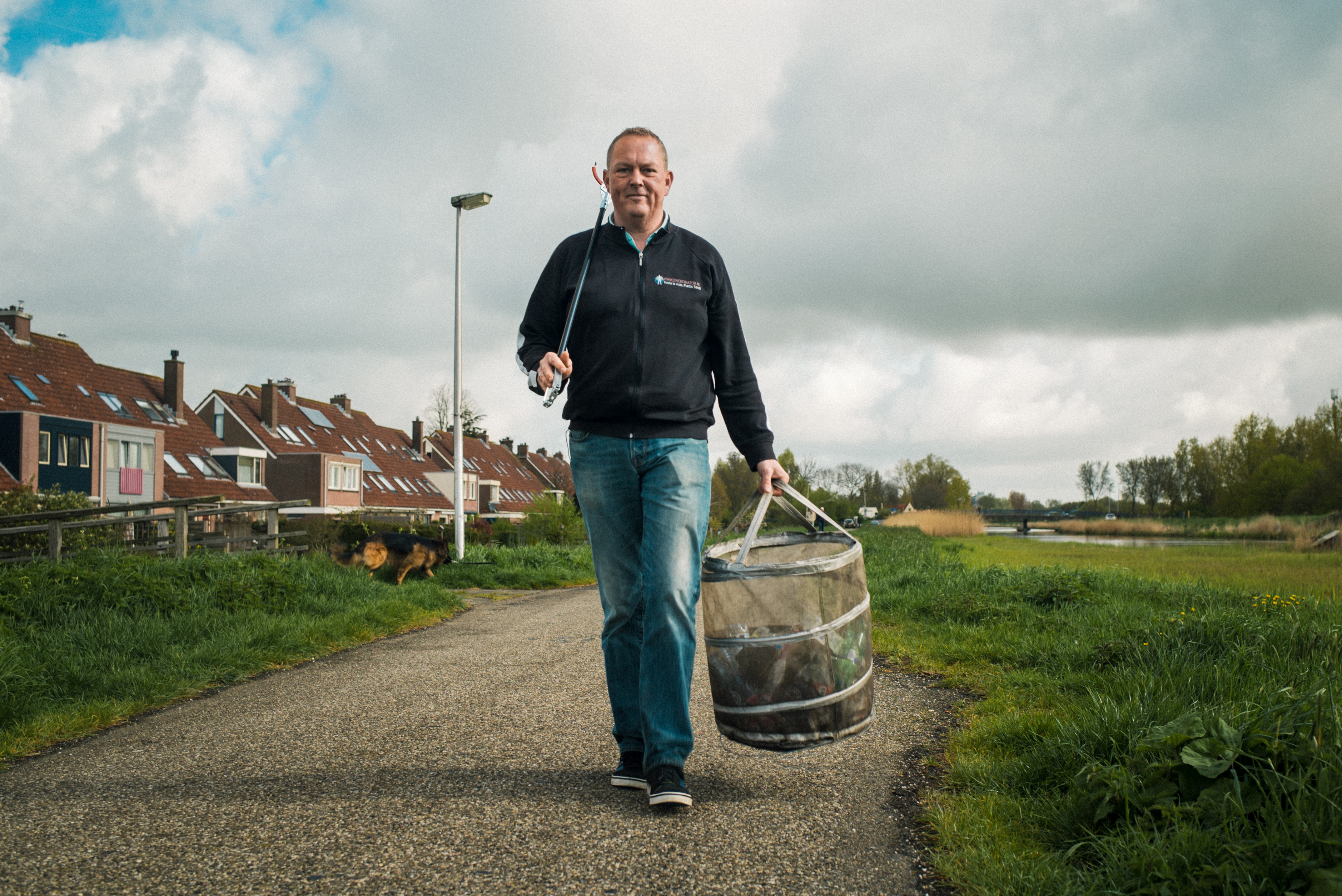
How a Dutch man collecting 400,000 pieces of litter ended up on a scientific paper
Anti-litter activist Dirk Groot photographed, tagged, and collected more than 400,000 pieces of litter in the Netherlands. Now, he and his data are included in a study on urban litter by researchers from Leiden University and Andrea Ballatore from Birkbeck, University of London.
By: Bryce Benda
It all started when industrial ecologist Stefano Cucurachi from the Institute of Environmental Sciences in Leiden received a LUF grant in 2018. Originally studying the environmental impact of the Dutch ban on free plastic bags, he soon became interested in the litter out there. ‘I found out that there is a very active community that picks up litter and collects data about it. I wondered if I could use that data for scientific purposes,’ Cucurachi says.

Upload pictures in an app
After some searching, Cucurachi stumbled upon an app called Litterati. ‘It’s an app where users can upload pictures of litter. The app automatically adds the time and location. Users can also add a tag of the type of litter, such as soda can or candy wrapper.’
The app is popular in the Netherlands. In fact, the Dutch are the most active users in the world. It has resulted in millions of uploads, making it a potential goldmine to Cucurachi.

Difficult to draw conclusions for the Netherlands
Cucurachi and his colleagues starting combing through the data. But after multiple analyses, they had to conclude that the Dutch data was not useful. ‘There were too many biases, a common problem in citizen science,’ Cucurachi says. ‘People using the app are volunteers. So they go to places they fancy and then use the app. Think of beaches and city parks. That bias makes it difficult to draw conclusions for the Netherlands as a whole.’
Loads of data from Purmerend
So the team tried a more local approach. Luckily, they noticed a very strange outlier: Purmerend, a municipality with a population of 80.000 people. ‘It had an insane amount of data, of which 98 per cent came from a single user. At first, we thought that data collected by one person would also be too biased.’
However, the user turned out to be Dirk Groot, or the Zwerfinator (see text frame), a famous litter collector. ‘He’s not just any person, but an expert focused on collecting litter data. He is very organised, so his data was very useful!’
Where can we find litter?
Eventually, Cucurachi and colleagues used the city as a case study. ‘We wanted to find out what types of litter you can find at certain locations in Purmerend.’
To do so, the team developed a dedicated research tool to extract data from Google Maps. They also used data from the municipality, eventually pinpointing 1400 locations of interest, such as bus stops, gyms, restaurants, supermarkets, and schools. ‘We even used Google Street View to really get to know the city. And we interviewed Groot, who really helped us interpret the data in space and time.’
‘With data we can guide, encourage and monitor the industry and the government’
Interesting results
The data allowed the researchers to map where litter is released at an unprecedented level of detail. Cucurachi: ‘In Purmerend, most litter consists of plastics, wrappers, energy drinks, and cigarette butts. You’ll find litter at areas of social aggregation, like shopping malls, churches, and sport clubs. You’ll likely find energy drinks near nightclubs, and plastic wrappers at cinemas and bus stations. Fast food leftovers were common in parking lots, even far away from the point of sale.’
Supermarkets and schools turned out to be litter hotspots as well. ‘We also found a lot of fireworks at parking lots, but luckily not on gas stations.’
How does this help?
It’s a nice example of citizen science, but how does it help us? ‘First of all, these activists collect litter with targeted campaigns. That’s how Groot and the Plastic Soup Surfer, with 16.000 pictures of Anta Flu wrappers, managed to persuade that company to switch to paper wrappers.’
Taking action against plastic Anta Flu-wrappers in nature (in Dutch)
Due to the selected cookie settings, we cannot show this video here.
Watch the video on the original website or‘Also, our research gives insight into what types of litter can be found where. Policy-makers can use that knowledge to do targeted cleaning or prevention campaigns.’ The municipality of Purmerend has already demonstrated that such an approach can work: based on Groot's data, the municipality started a targeted approach against litter, resulting in 40 per cent less litter.
Cucurachi also thinks it’s important to support the volunteers that collect litter. ‘It has a societal component to it. Hopefully, this could lead to bio-friendly materials, more cleaning at these litter hotspots, or eradicating the issues at the source with less consumption.

The Zwerfinator
The Zwerfinator, that’s what Dirk Groot calls himself. The name refers to the Dutch word ‘zwerfafval’, which means litter. Groot cleans up litter on a daily basis, in his hometown Purmerend and in the rest of the Netherlands. And not only that. He also registers the litter and successfully points out the impact to companies and governments.
‘We will never be able to solve the problem of litter completely. But with data, we can guide, encourage and monitor the industry and the government.’
Picture: Eelke Dekker
Paper
Andrea Ballatore, Teun Johannes Verhagen, Zhije Li, Stefano Cucurachi (2021), This city is not a bin: Crowdmapping the distribution of urban litter, Journal of Industrial Ecology
